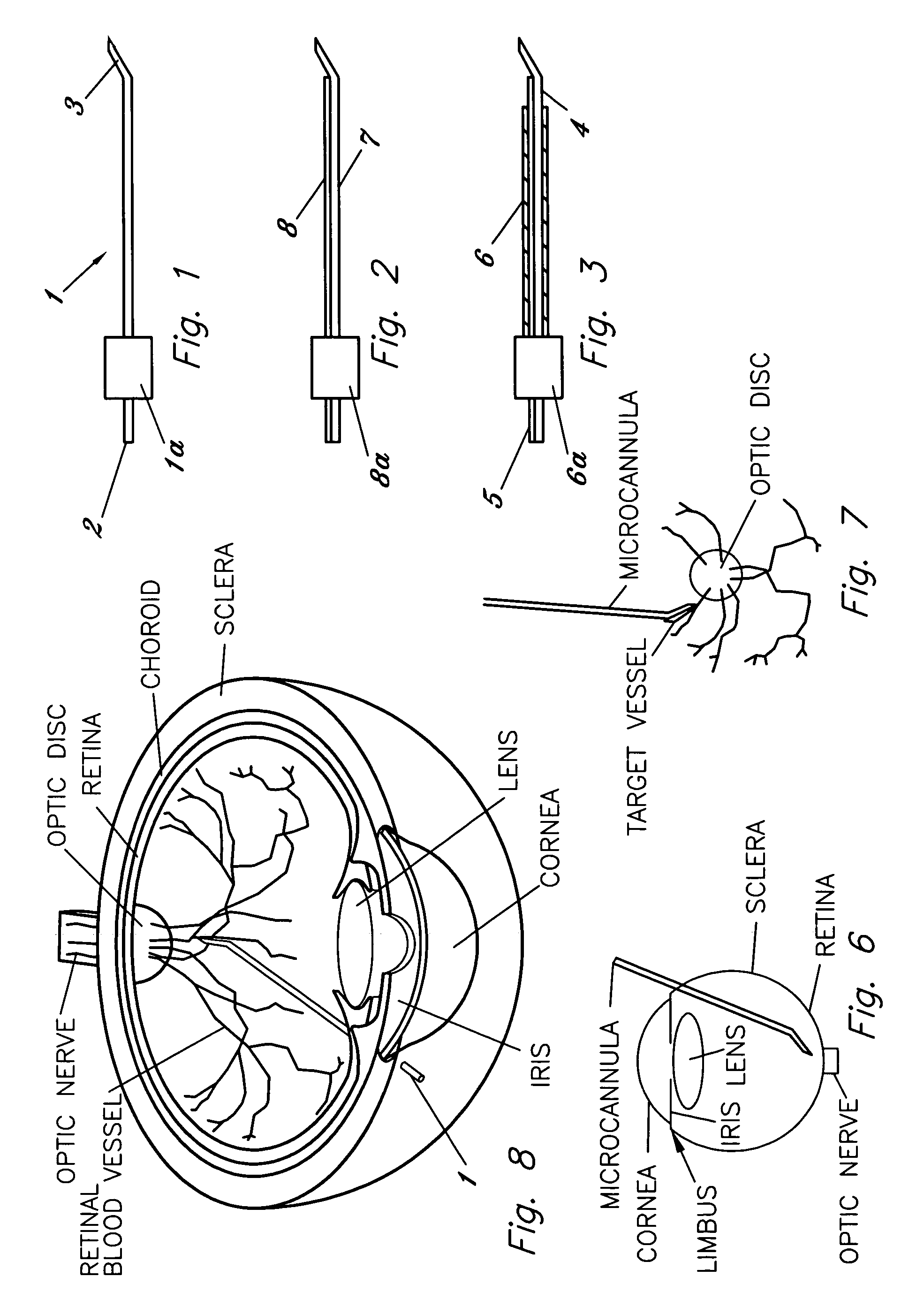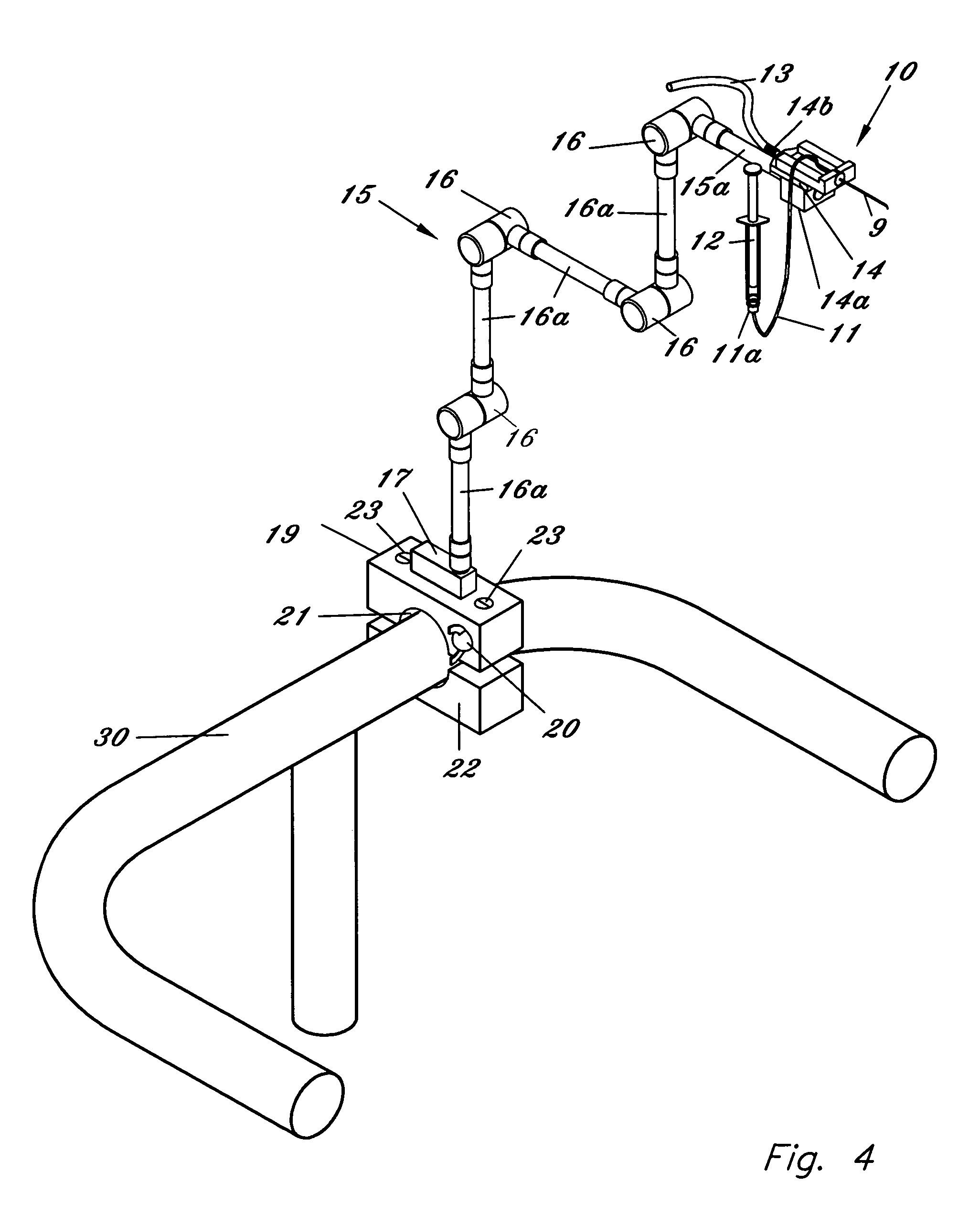Ocular implant needle
- Summary
- Abstract
- Description
- Claims
- Application Information
AI Technical Summary
Benefits of technology
Problems solved by technology
Method used
Image
Examples
first embodiment
[0054]FIG. 1 illustrates a first embodiment for the micropipette / microcannula (1) showing the opening (2) that is preferably connected to a surgical tubing and the tip (3) of the micropipette oriented at an approximately 135 degree angle, although other ranges are possible. Tip (3) can be angled so that it may safely cannulate the retinal vessel when micropipette (1) is placed through a standard retinal surgical sclerotomy site. While glass is suggested for the material because of its ease of fashioning, strength, transparency, etc., other materials may be used. It is essential, however, that the materials maintain substantial strength when fashioned to perform retinal vessel cannulation. A handle (1a) is shown attached to the body member of micropipette (1). Handle (1a) fits securely within a micropipette holder (10) by inserting the end of micropipette (1) associated with handle (1a) and handle (1a) into the front opening of holder (10). Once inserted micropipette (1) is held in p...
fourth embodiment
[0063]FIGS. 9A and 9B illustrate a front view of the microcannula in which the shaft (7) of the microcannula is enclosed by a protective sheath (6).
fifth embodiment
[0064]FIGS. 10A and 10B illustrate a fifth embodiment for the microcannula showing the microcannula (7) within a protective sheath (6) that protects the shaft of the microcannula and protective cover (31) that protects the tip of the microcannula (FIG. 10A). The protective sheath and cover may be made of metal, plastic, or other materials that protects the shaft and tip of the microcannula. As seen in FIG. 10B, the cover may be retracted once the microcannula is within the eye and is replaced or extended outwards once the procedure is complete and the microcannula is ready for removal from the eye, such that tip breakage is minimized.
PUM
 Login to View More
Login to View More Abstract
Description
Claims
Application Information
 Login to View More
Login to View More - R&D
- Intellectual Property
- Life Sciences
- Materials
- Tech Scout
- Unparalleled Data Quality
- Higher Quality Content
- 60% Fewer Hallucinations
Browse by: Latest US Patents, China's latest patents, Technical Efficacy Thesaurus, Application Domain, Technology Topic, Popular Technical Reports.
© 2025 PatSnap. All rights reserved.Legal|Privacy policy|Modern Slavery Act Transparency Statement|Sitemap|About US| Contact US: help@patsnap.com



